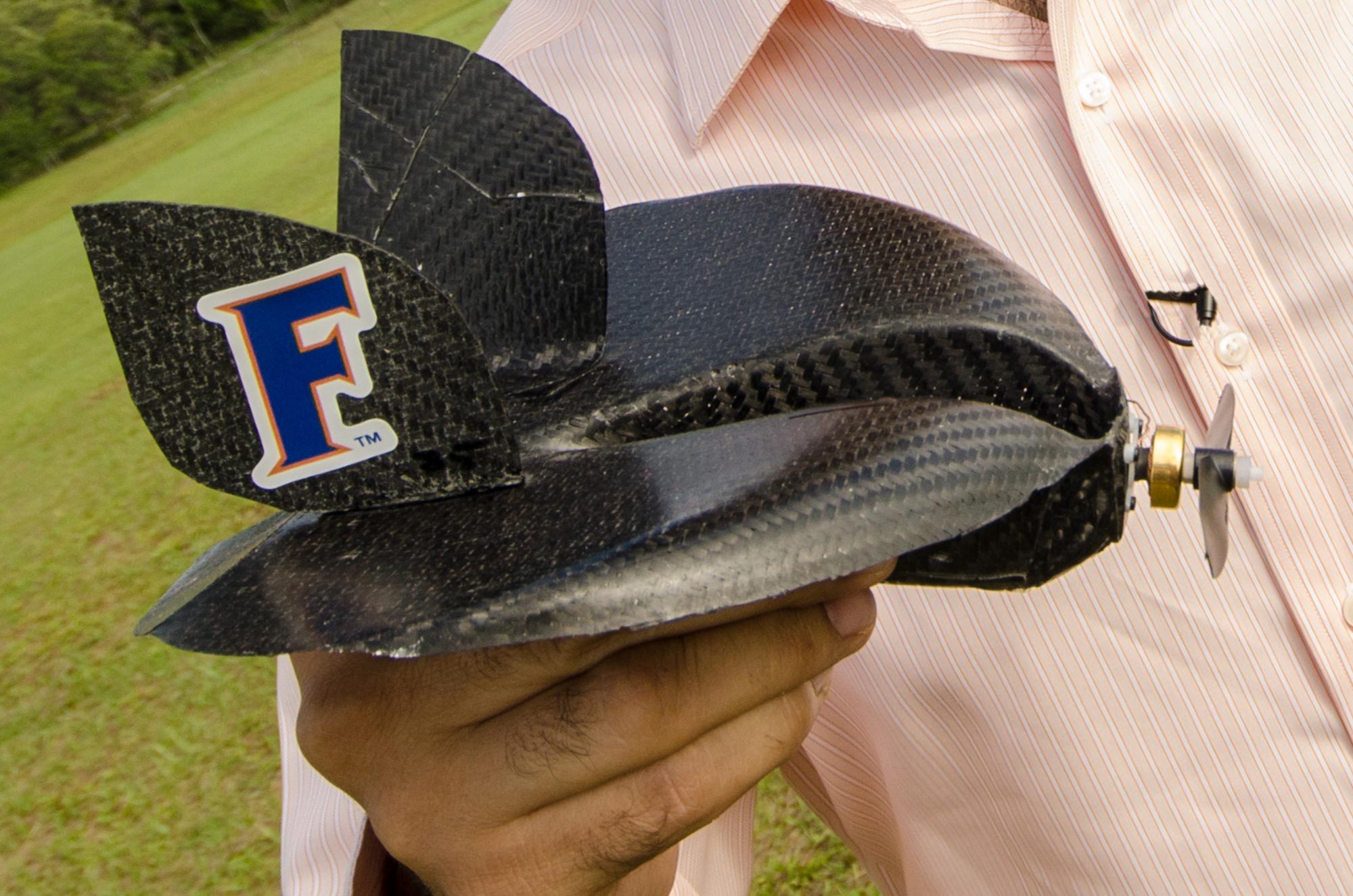Remember in Twister when they threw all those little sensors into the tornado? University of Florida scientists are working on a similar plan for hurricanes involving hundreds of tiny autonomous submarines and planes. The little bots would be fact-collectors swarming in, over, and under the storm to take measurements and relate data back to us so we can predict a hurricane’s strength and trajectory.
Currently, our best option for infiltrating hurricanes is to bust through a storm’s eye wall with a Lockheed-Martin WC-130J (a version of the better-known Super Hercules). Once inside, the aircraft releases dropsondes, lightweight cylinders packed with sensors. They’re good at gathering data, but the dropsondes have no more control over their mission than plastic parachute men. Not to mention if the plane goes down, you’re out $48.5 million and numerous human lives.
But eye-of-the-storm suicide missions are what drones do best. Kamran Mohseni and his team at the University of Florida have focused on making their carbon-fiber kamikazes tough as nails and light enough so they won’t become projectiles—each weighs as much as an iPod Nano. Scientists could deploy and monitor the drones remotely and remain out of harm’s way, while the sensors beam back valuable data in real time. Each drone will be able to detect pressure, temperature, humidity, location, and time.
Mathematical models also let the drones divine regions in the atmosphere and ocean that are blowing or flowing in the preferred direction. The hurricane hunters can then conserve fuel by catching a ride into the storm. The vehicles can even be powered on and off to await better conditions or to take advantage of currents once they’re in position. Furthermore, the bots boast a “cooperative control algorithm” that enables them to form a network and reposition themselves based on data the others are collecting.
Underwater, the submarines each bear an acoustic transmitter and receiver module, as well as a forward-looking camera. These little torpedoes—which change direction with squid-inspired thrusters—may be just as important as aerial reconnaissance. After all, the might of a towering hurricane begins with air pressure differences caused by warm, moist air rising off the ocean’s surface. Learning more about these forces could expand our understanding of hurricane formation and one day save lives.
Best of all, the aerial vehicles cost $250 a piece. So for the cost of one Super Hercules, you could theoretically deploy 194,000 of the hurri-planes. Of course, this is all theoretical until the team receives further funding. Mohseni estimates that with the proper investment, the drones could be ready for tests in real-world hurricanes in as little as two to three years.
But as Andrea makes her debut as the first named storm of the 2013 hurricane season, that seems like a long time to wait. So, uh, who wants to go in on a Kickstarter?
